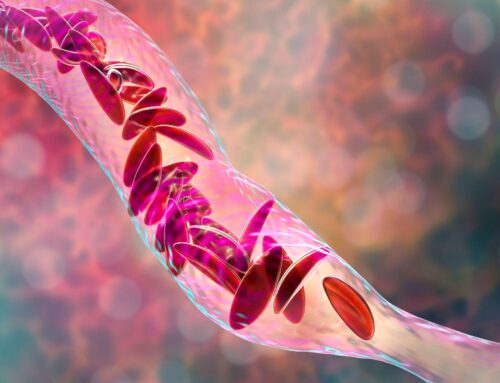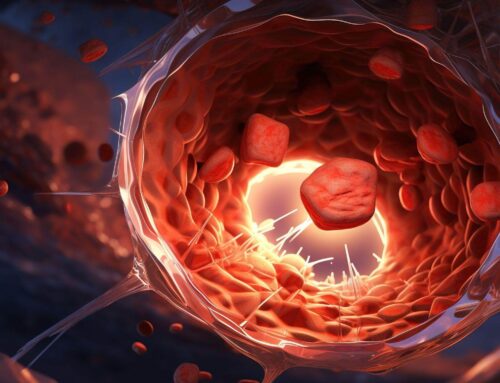Looking for something?
Oligonucleotides Safely Cross the Blood-Brain Barrier to Knock Down Gene Expression

Neurodegenerative diseases, brain tumors, and infectious diseases and inflammatory conditions that impact the brain wreak havoc on a person’s health and are notoriously difficult to treat. Oligonucleotide drugs could provide solutions to many pathological brain conditions if certain challenges could be overcome. Researchers at Tokyo Medical and Dental University, Takeda Pharmaceutical, and Ionis Pharmaceuticals may have found a solution.
There are numerous barriers to creating oligonucleotides therapeutics to treat brain conditions.
Oligonucleotide drugs must overcome many barriers in the body before they can do the work they were created for. Like all oligo drugs, those intended to treat the brain face swift clearance from the body, chemical degradation, the immune system, and difficulty crossing cell membranes (1).
Oligonucleotide therapies that are intended to reach the central nervous system (CNS) face further challenges, the first of which is the blood-brain barrier (BBB). The blood-brain barrier is a highly intricate system of mechanisms that work together to maintain brain homeostasis and prevent foreign molecules from entering the brain (1). Once in the CNS, the oligonucleotides must still show efficient RNA reduction (2). Toxicity, the inflammatory response, and immunogenicity are serious risks that must also be addressed (1).
Some drugs have been developed that are safe and effective when delivered directly to the CNS through intrathecal injection. ASOs are highly effective at treating certain CNS disorders when administered in this way. Nusinersen, which treats spinal muscular atrophy via intrathecal injections, is an ASO that has gained FDA approval. However, intrathecal injections can be difficult for patients to endure, especially young children. Unfortunately, single-stranded ASOs cannot currently enter the brain after systemic administration.
Oligonucleotide drugs that treat brain conditions will be better accepted by patients if they can be created in a way that allows them to be administered systemically, through IV injections or subcutaneously. Subcutaneous injections potentially offer the additional benefit of being self-administered, eliminating the need for repeated trips to a medical facility. However, for these methods to work, the drug must be engineered in a way that allows it to cross the blood-brain barrier. Often, even if an oligonucleotide drug can cross the blood-brain barrier without being degraded, the BBB is damaged.
Engineering a solution.
Ligand conjugation has proven to be successful in delivering oligonucleotides to the liver, and many conjugates are being developed to enable oligonucleotides to reach cells and tissues beyond the liver. Lipids, in particular, may provide an excellent solution in reaching this goal. Cholesterol and α-tocopherol are two specific lipids that have shown promise. In one instance, gapmers conjugated to α-tocopherol displayed much greater inhibitory efficacy than those that were unconjugated (3).
Cholesterol, a lipid found in every cell of the body, has been widely studied and is especially promising. Cholesterol conjugated oligonucleotides are internalized via cholesterol binding receptors, escape renal clearance, and demonstrate increased cellular uptake (4). Locally injected cholesterol-modified siRNA has led to functional gene silencing in the brain (5, 6).
Biscans et al. recently determined that “the chemical nature of the lipid conjugate has a profound impact on the degree of overall siRNA retention” and certain lipids resulted in higher retention in specific tissues than others. Interestingly, in some tissues, a specific lipid conjugation would result in high concentration of siRNA, without producing productive silencing (7).
This was proven true of ASOs as well. Researchers at Tokyo Medical and Dental University, Takeda Pharmaceutical, and Ionis Pharmaceuticals have developed an oligonucleotide drug that can be administered systemically, without damaging the blood-brain barrier, and suppress target gene expression in multiple types of cells in the brain by up to 90%.
What is this incredible invention? DNA/RNA heteroduplex oligonucleotides (HDOs) conjugated to cholesterol or α-tocopherol at the 5′ end of the RNA strand (2).
The teams have been working on DNA/RNA heteroduplex oligonucleotides (HDOs) to deliver more potent gene silencing in target cells for many years. In 2015, they reported the development of an HDO (Toc-HDO) which consists of DNA/LNA gapmer ASO and an RNA strand complementary to the DNA strand, conjugated to α-tocopherol on the 5’ end.
This hybridization markedly enhanced the activity of the parent ASO. It was tested in mice and cynomolgus monkeys and was less toxic to the liver, was not found to stimulate the immune system, and no additional off-target genes were downregulated (8). However, this specific structure was only effective in the liver, and delivery to the brain was negligible. So, they screened many other lipid ligands that conjugate to HDOs, using higher doses than previously in the hopes of developing a drug that could safely reach the CNS after systemic administration (2).
Cholesterol and α-tocopherol were two of the lipid ligands conjugated to the HDOs (Chol-HDOs and Toc-HDOs) targeting Malat1 in the CNS. Mice were IV injected weekly over a period of four weeks. Malat1 levels in the CNS were reduced by an astonishing 90% after repeated dosing of the Chol-HDO and remained reduced for more than two months. An approximate 50% reduction was observed with the Toc-HDO.
Additionally, marked reduction of the target RNA was seen in multiple regions of the CNS and in multiple cell types, with the greatest effects in neurons and microglial cells. Again, greater reduction was seen in mice who received Chol-HDO. Subcutaneous dosing delivered similar results. Some adverse effects were seen, but effects were reduced when the Chol-HDO was administered subcutaneously, rather than through an IV (2). Importantly, they did not observe any damage to the blood-brain barrier. The effects were also seen when the ASO targeted other neurodegenerative diseases, and when tested in rats. Dr. Takanori Yokota provides a brief explanation of the work in this video.
This fascinating work highlights the potential of oligonucleotides to safely treat brain conditions. If Chol-HDOs prove to be safe and effective in delivering ASOs to knockdown gene expression in the human central nervous system, neurodegenerative diseases that are currently untreatable or difficult to treat may have met their match. While this work is incredibly promising, it does still need a lot of work to determine whether it could be safe in humans. However, when paired with the recent advances in using siRNA therapeutics to heal the brain, it is exciting to see that we are closer than ever to providing true solutions to curing devastating brain conditions.
References:
- Nafee N, Gouda N. Nucleic Acids-based Nanotherapeutics Crossing the Blood Brain Barrier. Curr Gene Ther. 2017;17(2):154-169. doi: 10.2174/1566523217666170510155803. PMID: 28494740.
- Nagata T, Dwyer CA, Yoshida-Tanaka K, Ihara K, Ohyagi M, Kaburagi H, Miyata H, Ebihara S, Yoshioka K, Ishii T, Miyata K, Miyata K, Powers B, Igari T, Yamamoto S, Arimura N, Hirabayashi H, Uchihara T, Hara RI, Wada T, Bennett CF, Seth PP, Rigo F, Yokota T. Cholesterol-functionalized DNA/RNA heteroduplexes cross the blood-brain barrier and knock down genes in the rodent CNS. Nat Biotechnol. 2021 Aug 12. doi: 10.1038/s41587-021-00972-x. Epub ahead of print. PMID: 34385691.
- Nishina T, Numata J, Nishina K, Yoshida-Tanaka K, Nitta K, Piao W, Iwata R, Ito S, Kuwahara H, Wada T, Mizusawa H, Yokota T. Chimeric Antisense Oligonucleotide Conjugated to α-Tocopherol. Mol Ther Nucleic Acids. 2015 Jan 13;4(1):e220. doi: 10.1038/mtna.2014.72. PMID: 25584900; PMCID: PMC4345304.
- Benizri S, Gissot A, Martin A, Vialet B, Grinstaff MW, Barthélémy P. Bioconjugated Oligonucleotides: Recent Developments and Therapeutic Applications. Bioconjug Chem. 2019 Feb 20;30(2):366-383. doi: 10.1021/acs.bioconjchem.8b00761. Epub 2019 Jan 29. PMID: 30608140; PMCID: PMC6766081.
- DiFiglia M, Sena-Esteves M, Chase K, Sapp E, Pfister E, Sass M, Yoder J, Reeves P, Pandey RK, Rajeev KG, Manoharan M, Sah DW, Zamore PD, Aronin N. Therapeutic silencing of mutant huntingtin with siRNA attenuates striatal and cortical neuropathology and behavioral deficits. Proc Natl Acad Sci U S A. 2007 Oct 23;104(43):17204-9. doi: 10.1073/pnas.0708285104. Epub 2007 Oct 16. PMID: 17940007; PMCID: PMC2040405
- Alterman JF, Hall LM, Coles AH, Hassler MR, Didiot MC, Chase K, Abraham J, Sottosanti E, Johnson E, Sapp E, Osborn MF, Difiglia M, Aronin N, Khvorova A. Hydrophobically Modified siRNAs Silence Huntingtin mRNA in Primary Neurons and Mouse Brain. Mol Ther Nucleic Acids. 2015 Dec 1;4(12):e266. doi: 10.1038/mtna.2015.38. PMID: 26623938; PMCID: PMC5014532.
- Biscans A, Coles A, Haraszti R, Echeverria D, Hassler M, Osborn M, Khvorova A. Diverse lipid conjugates for functional extra-hepatic siRNA delivery in vivo. Nucleic Acids Res. 2019 Feb 20;47(3):1082-1096. doi: 10.1093/nar/gky1239. PMID: 30544191; PMCID: PMC6379722.
- Nishina K, Piao W, Yoshida-Tanaka K, Sujino Y, Nishina T, Yamamoto T, Nitta K, Yoshioka K, Kuwahara H, Yasuhara H, Baba T, Ono F, Miyata K, Miyake K, Seth PP, Low A, Yoshida M, Bennett CF, Kataoka K, Mizusawa H, Obika S, Yokota T. DNA/RNA heteroduplex oligonucleotide for highly efficient gene silencing. Nat Commun. 2015 Aug 10;6:7969. doi: 10.1038/ncomms8969. PMID: 26258894; PMCID: PMC4918363.








